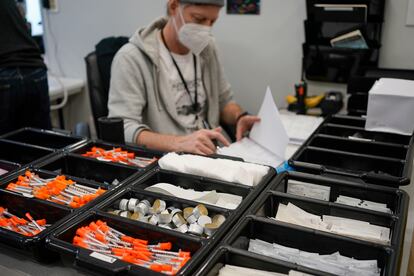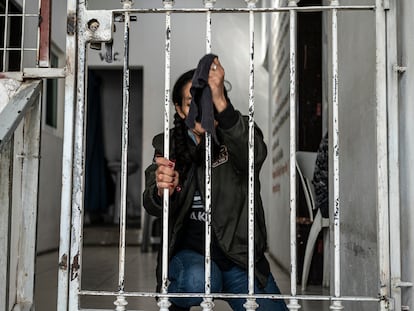US backs study of whether overdoses can be prevented by safe injection sites
The so-called safe injection sites are places where people can use heroin and other illegal drugs and be revived if they take too much

For the first time, the U.S. government will pay for a large study measuring whether overdoses can be prevented by so-called safe injection sites, places where people can use heroin and other illegal drugs and be revived if they take too much. The grant provides more than $5 million over four years to New York University and Brown University to study two sites in New York City and one opening next year in Providence, Rhode Island.
Researchers hope to enroll 1,000 adult drug users to study the sites’ effects on overdoses, to estimate their costs and to gauge potential savings for the health care and criminal justice systems.
The universities announced the grant Monday. The money will not be used to operate the sites, the universities said.
With U.S. drug overdose deaths reaching nearly 107,000 in 2021, supporters contend safe injection sites, also called overdose preventions centers, can save lives and connect people with addiction treatment, mental health services and medical care.
Opponents worry the sites encourage drug use and that they will lead to the deterioration of surrounding neighborhoods.
“There is a lot of discussion about overdose prevention centers, but ultimately, we need data to see if they are working or not, and what impact they may have on the community,” said Dr. Nora Volkow, director of the National Institute on Drug Abuse, which awarded the grant.
Sites operate in 14 countries, including Canada, Australia and France, according to the Drug Policy Alliance, a group working for decriminalization and safe drug use policies.
In the U.S., New York City opened the first publicly recognized safe injection site in 2021 and Rhode Island became the first state to authorize them that year.
States including Colorado, Nevada and New Mexico have considered allowing them. The governors of California and Vermont vetoed safe injection site bills last year, and Pennsylvania’s Senate last week voted for a ban on them.
The grant marks another move by the Biden administration toward what is known as harm reduction, a strategy focused on preventing death and illness in drug users while helping them get care, as opposed to punishment.
The White House’s drug control strategy is the first to emphasize harm reduction, and the Justice Department has signaled it will allow safe injection sites.
In December, the National Institutes of Health established a harm reduction research network to study programs providing services and supplies such as naloxone, a drug that can reverse overdoses, and materials to test drugs for fentanyl, a powerful opioid driving record numbers of overdoses. The new study will be part of that project.
Sign up for our weekly newsletter to get more English-language news coverage from EL PAÍS USA Edition
Tu suscripción se está usando en otro dispositivo
¿Quieres añadir otro usuario a tu suscripción?
Si continúas leyendo en este dispositivo, no se podrá leer en el otro.
FlechaTu suscripción se está usando en otro dispositivo y solo puedes acceder a EL PAÍS desde un dispositivo a la vez.
Si quieres compartir tu cuenta, cambia tu suscripción a la modalidad Premium, así podrás añadir otro usuario. Cada uno accederá con su propia cuenta de email, lo que os permitirá personalizar vuestra experiencia en EL PAÍS.
¿Tienes una suscripción de empresa? Accede aquí para contratar más cuentas.
En el caso de no saber quién está usando tu cuenta, te recomendamos cambiar tu contraseña aquí.
Si decides continuar compartiendo tu cuenta, este mensaje se mostrará en tu dispositivo y en el de la otra persona que está usando tu cuenta de forma indefinida, afectando a tu experiencia de lectura. Puedes consultar aquí los términos y condiciones de la suscripción digital.
More information
Archived In
Últimas noticias
NASA discovers Titan doesn’t have an ocean, but a ‘slushy ice layer’ that increases possibility of life
Innocence lost in the forest of the child soldiers: ‘Each leader of the armed group had his girls’
‘Fallout’ or how the world’s largest company turned an anti-capitalist apocalyptic Western into a phenomenon
From inflation to defending migrants: Eileen Higgins and Zohran Mamdani inaugurate the new Democratic resistance against Trump
Most viewed
- ‘El Limones’ and the growing union disguise of Mexican organized crime
- Christian Louboutin: ‘Young people don’t want to be like their parents. And if their parents wear sneakers, they’re going to look for something else’
- The low-cost creative revolution: How technology is making art accessible to everyone
- ‘We are dying’: Cuba sinks into a health crisis amid medicine shortages and misdiagnosis
- Liset Menéndez de la Prida, neuroscientist: ‘It’s not normal to constantly seek pleasure; it’s important to be bored, to be calm’










































